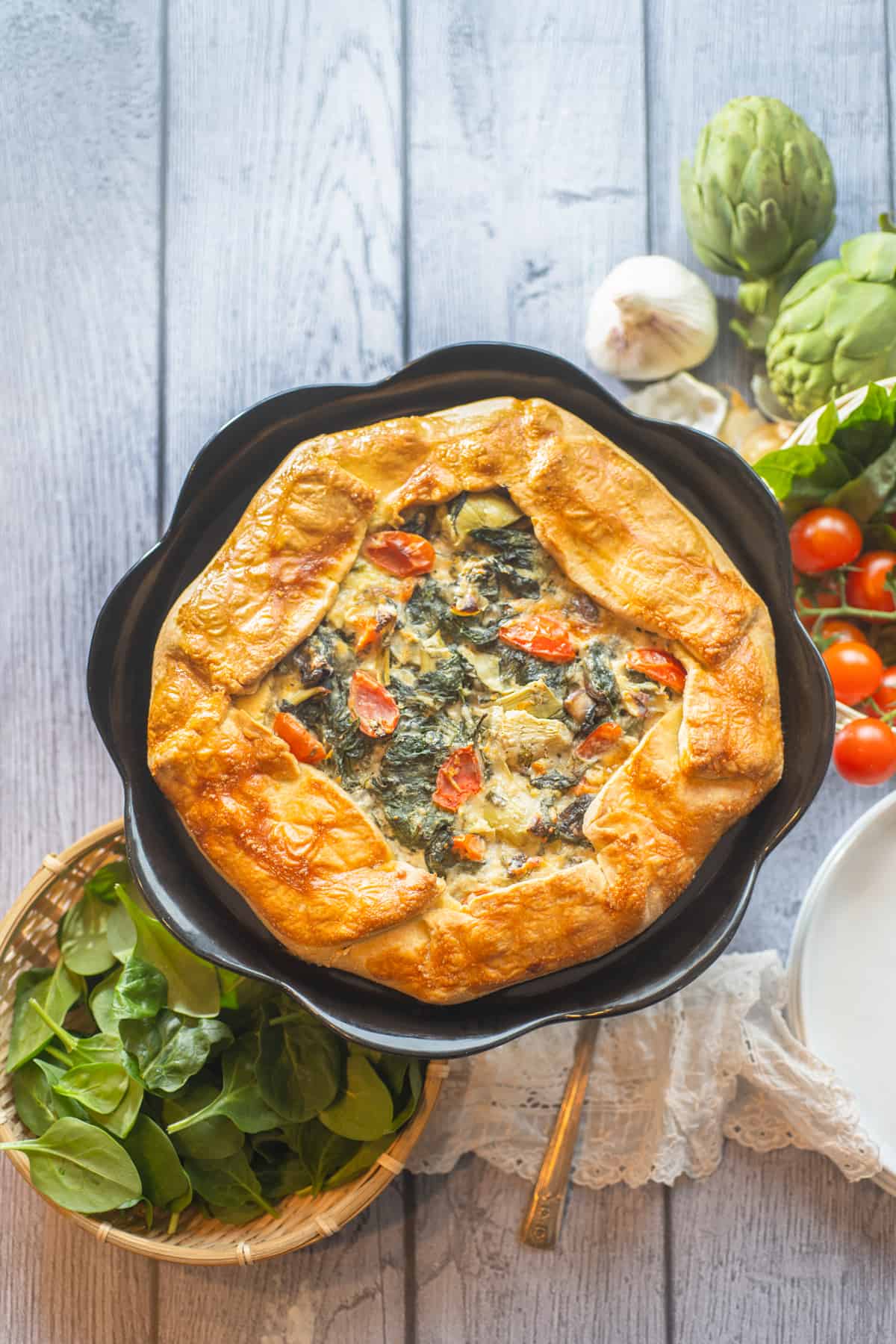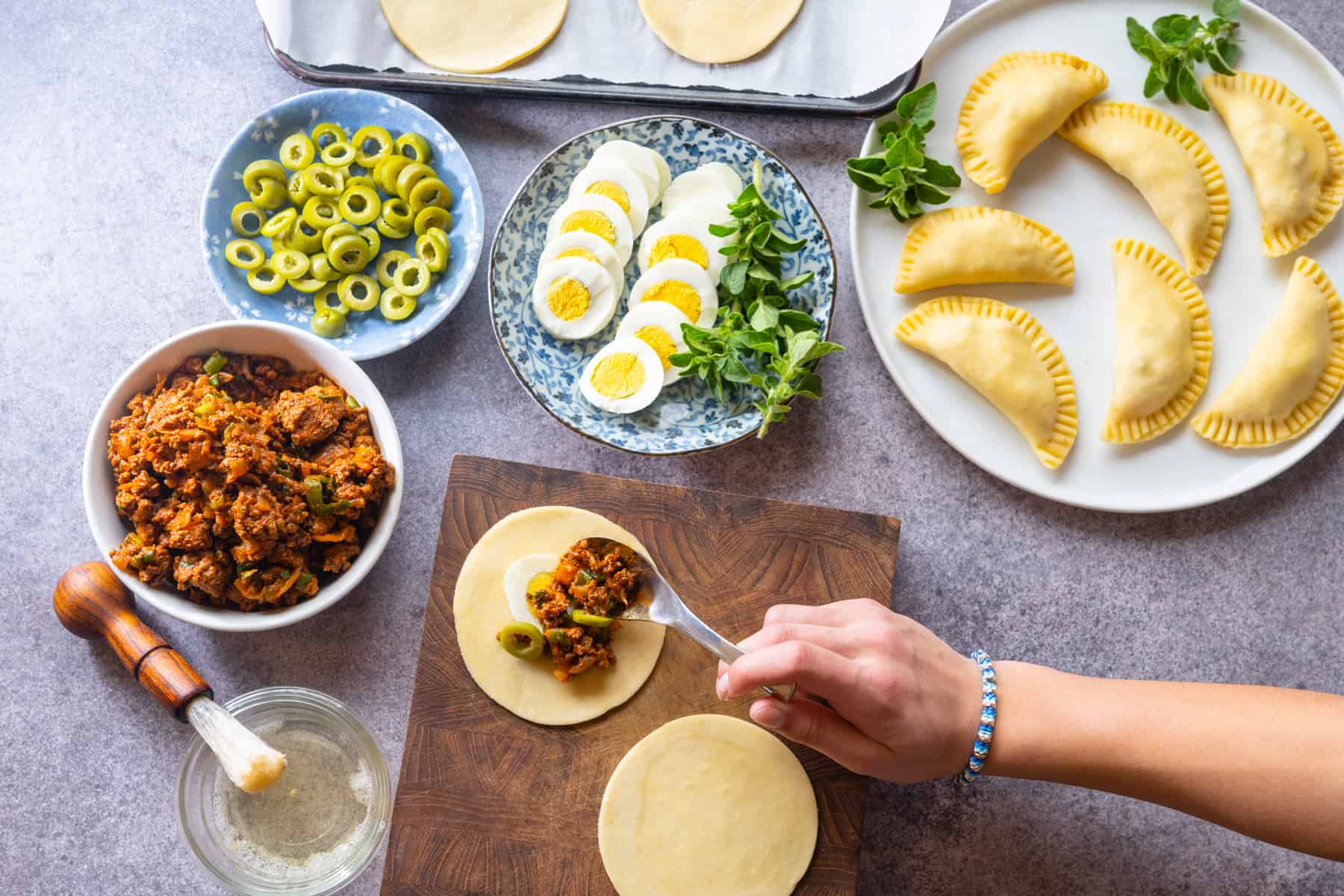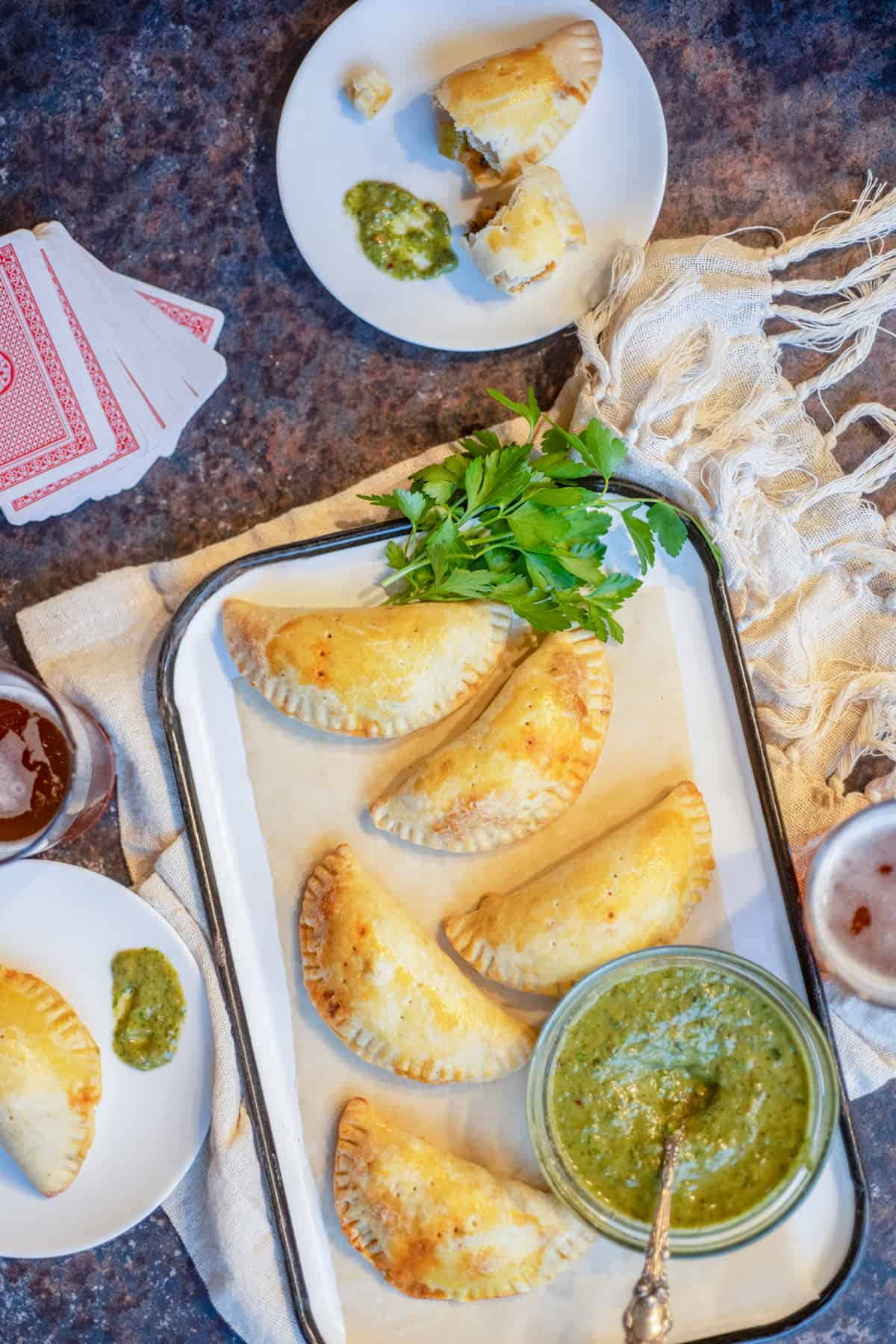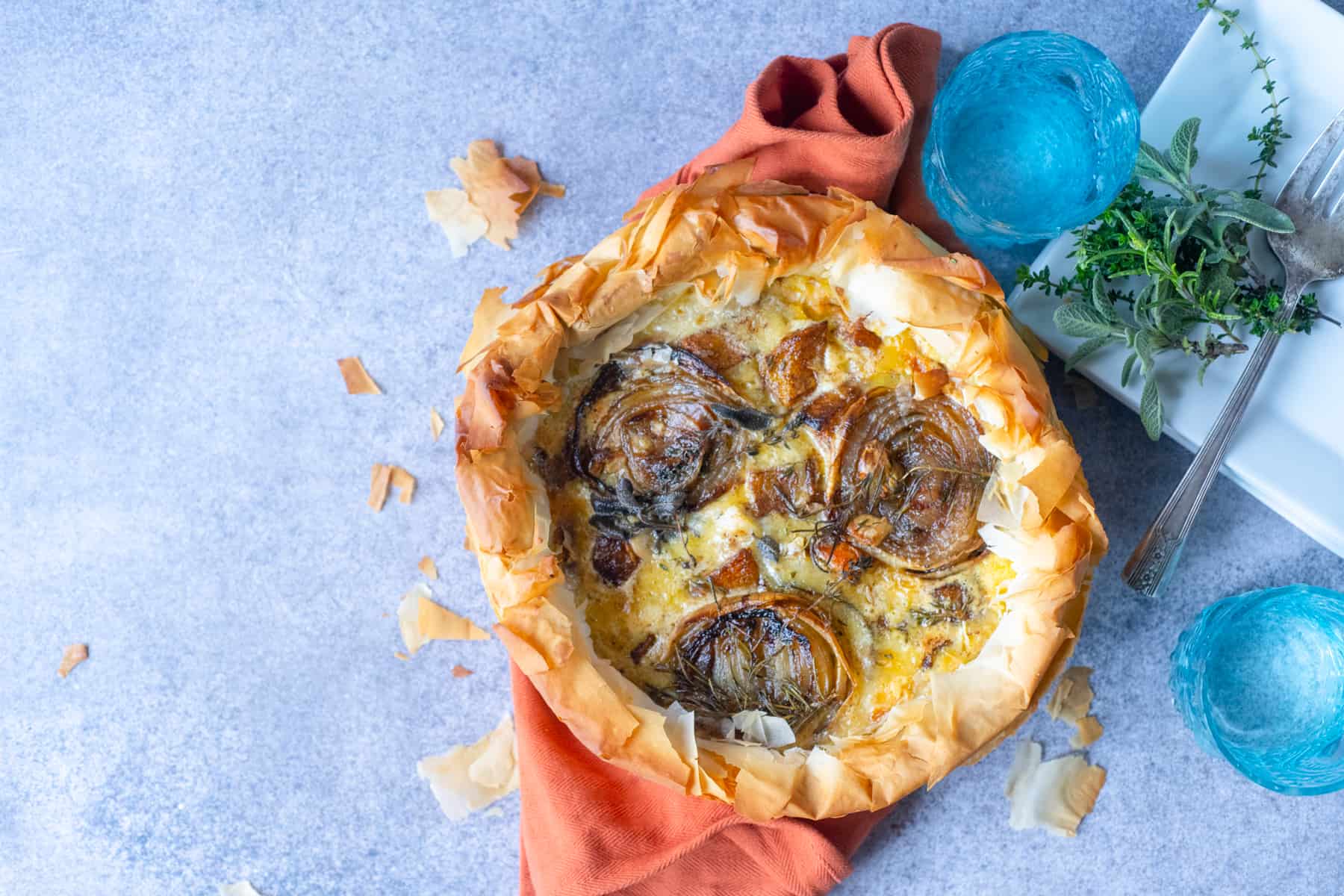By Sue Muncaster // Photography by Paulette Phlipot
—
My favorite childhood memories involve tying on an apron, crawling up on a stool, helping my grandmother sprinkle flour on the kitchen counter, and watching her whip up a pie. As I got older, she trusted me to roll out the dough. Every time I use her old rolling pin, I remember her soft touch and the smell of her warm kitchen.
In busy modern times, making handmade pastries has become a lost art, but like most things that take time, it’s well worth the effort. From well-known savory treats, like calzones, quiches, and egg rolls, to exotic ethnic creations, like samosas (Nepal), boreks (Turkey), and Kalitsounia (Greece), virtually every culture has a way of surrounding meat, vegetables, and cheese with a flaky pastry dough.
These hands-on recipes offer a great way to introduce family members to baking (like my grandma did with me). Create an assembly line for the empanadas to make the task less daunting (and a whole lot more fun!). One person can prepare the discs, a second can fill and fold, and even the youngest child can manage a pastry brush for the egg washing, and then prick discs with a fork.
Once you master the basic dough and techniques, you can change it up to suit your tastes using what’s in season.

Spinaci Crostata
—
Serves 8
The edges are roughly folded to create a rustic and “not so put together” creation. Ideal for the novice baker.
—
For the Crust:
1 cup all-purpose flour (plus more for rolling)
1/2 cup fine cornmeal
1/4 teaspoon Kosher salt
10 tablespoons unsalted butter, cold and cut into small cubes
1/2 cup sharp cheese, grated
6 tablespoons ice water
1 egg white, lightly whisked (for brushing on the crust)
- Pulse dry ingredients, butter, and grated cheese in a food processor until small pea-sized balls form.
- Add ice water, a couple of tablespoons at a time, pulsing until one uniform ball forms.
- Lightly flour a work surface, and form the dough into a disc with your hands. (If it’s too sticky, sprinkle some flour on the outside and incorporate it.)
- Cover the dough with plastic wrap and refrigerate for 30 minutes.
For the Filling:
8 to 10 cups fresh spinach leaves
3/4 cup sliced shitake mushrooms
2 teaspoons butter
1/3 cup sour cream
1 clove garlic, chopped
1/2 teaspoon lemon zest
5 artichoke hearts, sliced in quarters
3/4 cup mozzarella, shredded
1/2 cup Parmesan cheese, grated
1/4 cup fresh basil, chopped
6 cherry tomatoes, sliced in quarters, seeds removed
1 egg white
1/2 teaspoon Kosher salt
1/2 teaspoon fresh ground pepper
- Steam the spinach in a colander over boiling water until no longer crisp. Drain and roll in paper towels to remove as much liquid as possible. Let it cool.
- In a small frying pan, sauté the sliced mushrooms in butter until softened.
- In a medium-sized bowl, mix the spinach and mushrooms with all other filling ingredients.
Assembly:
- Preheat your oven to 400° F.
- Unwrap the chilled dough onto a floured surface. Roll the dough with a rolling pin or wine bottle into a 14- to 15-inch disc. (It does not have to be perfect.) Place the dough on a lightly greased cookie sheet.
- Mound the spinach mixture evenly over the dough, leaving a 2-inch even border.
- Fold the crust upward, around the edges, and over the filling. Brush the folded edges of the crust with the beaten egg white. Pinch any openings.
- Bake for 30 to 40 minutes, or until the crust becomes golden brown. Cool for 15 minutes before slicing.
Tip no. 1: If you don’t have a food processor, sub a pastry cutter or fork when making the dough. (If Grandma did it, you can too!)

Baked Picadillo Empanadas with Simple Chimichurri
—
Makes 20-ish empanadas
Derived from the Spanish verb “empanar,” which literally means “to wrap or coat in bread,” stuffed empanadas can be found on just about every street corner from Mexico to the Tierra del Fuego.
—
For the dough:
3 cups flour
1/2 teaspoon Kosher salt
1/2 cup lard, butter, or a mix of both (Lard is worth it!)
1 egg, separated
3/4 to 1 cup warm (not hot) milk
- Place the flour and salt in a food processor and pulse until well combined. Add the lard or butter and pulse until blended.
- Pulse in the egg yolk, and then add the milk in small amounts, pulsing until dough clumps start to form.
- Divide the dough into two balls. Flatten them into discs, cover, and chill in the refrigerator for about 30 minutes.
- On a lightly floured surface, roll the dough into a thin sheet, and use round molds or a small plate to cut out 4- to 5-inch discs. Alternately, use a tortilla press.
For the Filling:
2 tablespoons olive oil
1 white onion diced
1 pound ground beef
2 tablespoons smoked paprika
2 teaspoons chili powder, or any ground hot pepper
1/2 tablespoon ground cumin
1/2 teaspoon Kosher salt
Black pepper to taste
1 bunch green onions, finely chopped
1 tablespoon fresh oregano, finely chopped
3 hard boiled eggs, sliced
1/4 cup green olives, sliced
egg white, lightly whisked
- In a large frying pan, heat oil, add onion, and sauté until soft.
- Add the meat and dry spices and cook completely on medium heat, stirring frequently to break up clumps.
- Let the mixture cool, and then mix in the chopped green onions and oregano.
- Slice the eggs and olives and place them in separate bowls.
Assembly:
- Preheat the oven to 400° F.
- Place a spoonful of the filling mixture on the middle of each empanada disc, leaving 1/2- to 3/4-inch of dough uncovered around the circumference.
- Place an egg slice and an olive or two on to the mound.
- Brush the edges very lightly with egg white.
- Fold the empanada discs and seal the edges by crimping with a fork or using an empanada mold.
- For best results, chill the empanadas for at least 30 minutes. (This helps them seal better and prevents leaks.)
- Before baking, brush the top of the empanadas with the egg yolk and prick twice with a fork.
- Bake for 18 to 20 minutes, or until golden. Serve with chimichurri.
For the chimichurri sauce:
3 tablespoons fresh oregano, coarsely chopped
2 tablespoons Italian parsley, coarsely chopped
2 tablespoons fresh basil, coarsely chopped
4 cloves garlic, minced
2 tablespoons balsamic vinegar
6 tablespoons olive oil
1 teaspoon Sriracha (or 1/4 to 1/2 teaspoon red chili flakes)
3 green onions, coarsely chopped
Salt and pepper to taste
- Combine all of the ingredients in the blender (or mini food processor) and puree to a smooth sauce.
- Taste and adjust the salt and pepper or chilis, as needed.
- Refrigerate until ready to use. (It’s best used the same day).


Butternut Squash and Fondue Pie with Honey Herb Glaze
—
This recipe, adapted from a New York Times recipe by Yotam Ottolenghi, combines mature cheese, mellow squash, juicy onions, and savory honey. Plus, I make it easy by using store-bought phyllo dough.
—
For the Crust:
5 tablespoons unsalted butter, melted (plus more for greasing)
10 sheets phyllo pastry dough, thawed if frozen
For the filling:
1 small butternut squash (about 1 3/4 pounds), cut into cubes
1 3/4 teaspoons ground cinnamon
4 tablespoons olive oil, plus extra for greasing
1 teaspoon Kosher salt
Fresh ground black pepper to taste
1 yellow onion, peeled and cut into five rounds
6 garlic cloves, crushed
1/2 cup dry white wine
1 tablespoon fresh thyme leaves, roughly chopped, plus 5 extra sprigs
1 cup heavy cream
1 large egg, plus 2 yolks
1 tablespoon cornstarch
1 1/2 cups Gruyère, grated
1 1/3 cups raclette, Emmental, or swiss cheese, grated
Fresh ground black pepper
For the glaze:
3 tablespoons apple cider vinegar
3 tablespoons honey
2 sprigs each fresh thyme, sage, and rosemary
1 tablespoon chopped fresh sage
2 tablespoons olive oil
1 clove garlic, smashed
Assembly:
- Heat the oven to 450° F. Line the bottom of a cookie sheet with parchment. Grease the bottom and sides of a 10- to 12-inch springform pan, then line the bottom with a circle of parchment paper.
- In a large bowl, toss the butternut squash, cinnamon, 2 tablespoons of the olive oil, 1/2 teaspoon of salt, and a liberal grind of pepper. Transfer the squash to the cookie sheet and arrange in one layer. Add the onion rounds to the same bowl, along with another drizzle of olive oil, 1/8 teaspoon salt, and another good grind of pepper. Toss gently to coat, keeping the onion rounds intact. Lay the onions on the baking sheet next to the squash.
- Roast for 30 minutes, carefully turning the vegetables over halfway, until softened and well browned. Remove from oven and set aside to cool.
- Turn the oven temperature down to 375° F.
- While the squash and onions roast, add the remaining 1 tablespoon of olive oil to a small skillet over medium-high heat. Add the garlic and cook until just brown, and then add the wine and chopped thyme and cook until reduced by half (about 3 to 5 minutes). Set aside to cool.
- Add the cream, eggs, cornstarch, 1/2 teaspoon salt, and plenty of pepper to a large bowl and whisk until smooth. Stir in both cheeses and the cooled wine mixture and set aside.
- In a separate small saucepan, simmer vinegar, honey, fresh herb sprigs for two minutes over medium heat. Add olive oil and garlic and simmer for another 2 to 3 minutes.
- Lay one sheet of phyllo out onto a clean work surface and brush liberally with melted butter. Lay the sheet over the prepared cake pan, carefully pushing it down to fit into the bottom and sides, allowing the excess to hang over the pan. Repeat with the remaining sheets of phyllo, rotating them slightly so that the overhang falls at a different angle. (Don’t stress if the phyllo tears, it will all work out in the end.)
- Add two-thirds of the squash and two of the onion rounds to the base, then pour the cheese mixture on top. Sprinkle the remaining squash and onion rounds over the top and press them into the mixture slightly. Pour the honey glaze and herb sprigs over the filling.
- Fold over the overhanging phyllo dough, scrunching it to create a 1-inch border around the sides, with the center exposed. Brush the scrunched-up phyllo with the remaining melted butter.
- Place the springform pan onto the cookie sheet (in case it leaks) and bake for 30 minutes.
- Remove from oven and use a tea towel to carefully release and remove the outer rim of the cake pan. Return the pie to the oven for another 20 minutes, or until the outsides are golden and cooked through. Set aside to cool for about 20 minutes.
